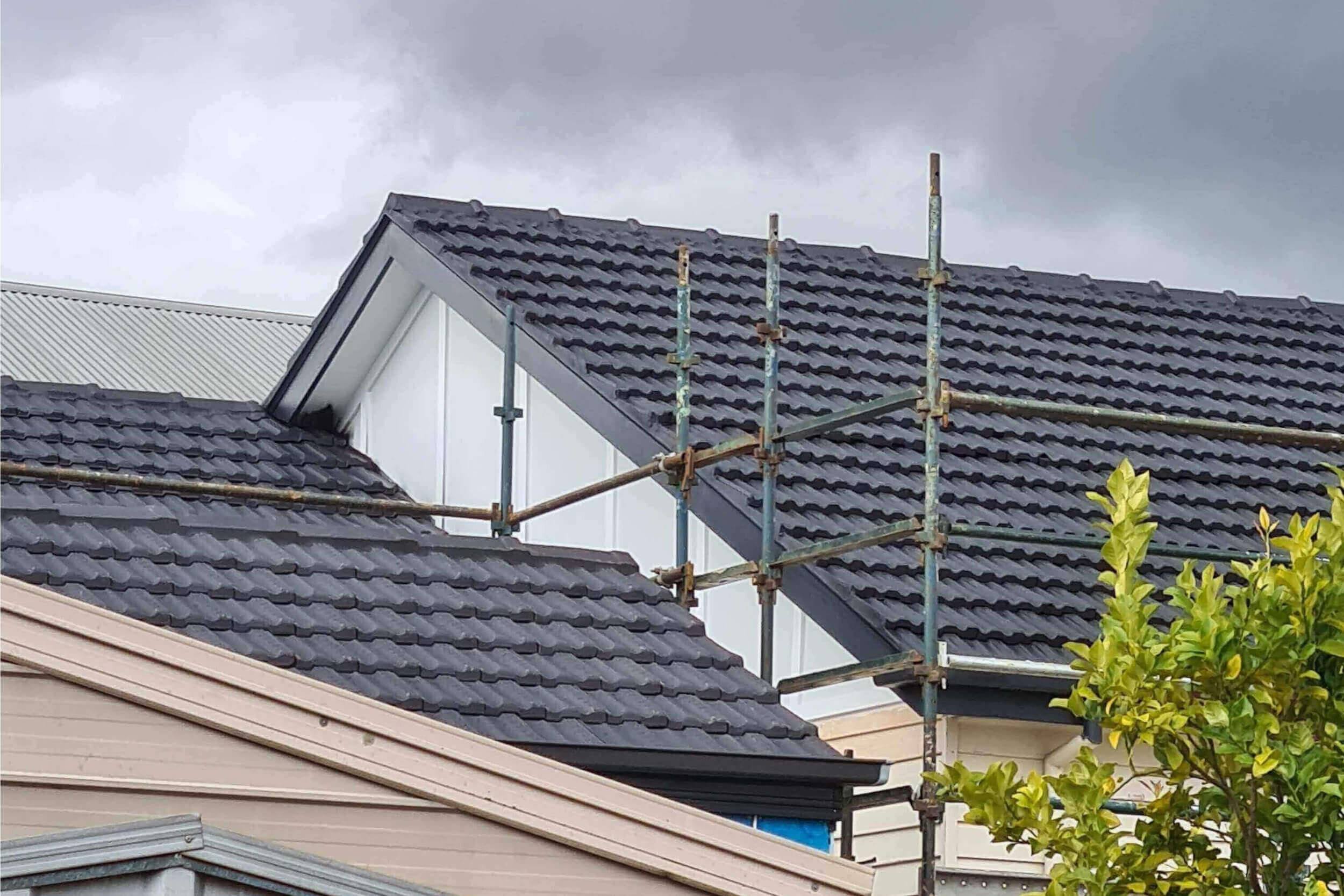HOME EXTENSION & RENOVATION - PRESTON
Currently Under Renovation
PROJECT CASE STUDY
When I began working with my clients who were extending and renovating their family home. Initially they wanted to engage me to help them curate furniture and accessories, for their home, that they were planing on extending.
At the time, they were working with a Design and Build Company, who had proposed an upstair addition (consisting of 2 bedrooms, a small retreat and bathroom) and a one 1 metre addition to the rear of the house.
The cost of the envisaged extension was quoted at approximately $300,000 (excluding the alfresco). There would be no changes made to the kitchen, existing bathrooms or other rooms within the home, the floors would remain; with the new additions being matched to the old. The finishes were to be provided by my clients.
PROJECT BRIEF
My clients were uneasy with the plan and asked me to provide feedback on what was proposed. I asked them for the brief that they had provided to the Design and Build company, to assess the design against the brief. I found that there was no such document. Without a clear brief and an articulation of my clients’ requirements, there was a lack of direction - which in turn, I believe added to their trepidation.
With a view to honing in on my clients’ needs, I conducted a Deep Dive. Through this process we ascertained the purpose of the extension and their home’s short comings, that they wished to address through their planned remodel. We looked at their current requirements and the future needs of their growing family. Their wish list included:
Guest Accommodation - for occasional family and friends who’d visit from abroad and interstate.
Zoning - The master bedroom to have quick access to the children’s rooms, as my clients had two children under 4 and they intended on having a third.
A formal living room was not a requirement - but an open plan family/dining room and playroom were.
An alfresco with a fully decked kitchenette for entertaining.
Better storage solutions for their growing family.
A light filled home to increase the home’s comfort.
A new colour scheme to refresh the home.
Specifications that celebrate the architectural details of the home.
PREVIOUSLY PROPOSED SOLUTION
Original house and previously proposed demolition plan
Previously proposed floor plan design
Assessment of Previously Proposed Solution
There were a number of fundamental problems with the design solutions previously proposed:
The flow of the home was poor. The only way to access the new extended family space was via the old kitchen.
The placement of the staircase cut through the original dining room/proposed study in a way that could’ve given rise to a number of problems:
a. It changed the shape of the formal living room. From an aesthetic point of view, maintaining the symmetry of that room (given the placement of the original fireplace, this being the focal point) would be important to have retained a sense of formality.
b. The study would become a sliver of a room once the fireplace was accounted for. In effect the home would have lost a room downstairs to gain two upstairs. Effectively adding one extra room and a modest retreat for the $300,000 expense.
c. The staircase also would’ve locked the size of the kitchen in place, without a possibility of expansion. This meant that the client would’ve not been able to update the kitchen with an island, which was one of their main priorities.Per the clients’ brief, both the formal living room and the study would be redundant spaces.
The design had not considered the home’s orientation or adding natural light. That is:
a. The suggested positioning of the second floor towards the front of the house, meant there was no way to bring light into the entryway or kitchen via a skylight.
b. There was no thought given to capturing the northern sun (which gives the best light and heat) via the proposed study and family rooms.
c. Extensive glazing to the western wall and the depth of the alfresco meant more harsh light and heat would be drawn into the family spaces. This would’ve made an uncomfortable living environment and would’ve potentially increased spending cooling and heating the house.Space planning considerations such as room dimensions, storage solutions and notional furniture size had seemingly not been taken into account in the proposed design solution.
There didn’t seem to have been thought given to the architectural features of the interior, particularly the ornamental fireplaces and how they could’ve been used to create focal points, or wow-factors could’ve been created with the inclusion of architectural detailing within the home.
COURSE CORRECTION
Revised floor plan design - currently under construction
Addressing the Brief
Guest Accommodation
Being able to accommodate occasional visitors for short and medium term stays, was a primary requirement. Recognising the transient nature of these visits, the following was done:
The previously proposed study through which the staircase was to rise was deemed a Multi-Purpose Room (MPR) instead.
The MPR would be used as the children’s playroom during most times of the year.
For guests a custom, Queen sized sofa bed was included in the furniture plan and sliding double doors were incorporated for privacy.
The original shed was replaced by an Independent Living Unit (bungalow), that includes a kitchenette, bathroom and large open plan studio style living space.
The bungalow will double up as a man-cave during most days and be transformed into a cozy bungalow style guest home as required.
Rethinking the functions of the existing structures, we were able to mitigate the costs and risks of an upstair extension that was originally proposed.
2. Zoning
Originally, there were two bedrooms at the front of the home, with one bedroom located at the rear. This created a disconnect in the home’s zoning. With this in mind it was decided that:
The previously proposed formal living room (that was disconnected from the rest of the living spaces) was redundant.
This formal living room was repurposed as a children’s shared bedroom and the third smaller room as a nursery.
These changes allowed moving the bedrooms to the front of the home, in close proximity and easy access to one another.
3. Open Plan Living
The creation of a open plan living space, keeping the kitchen in the centre of the home was a primary consideration for my clients. As such the design allowed for the following:
The kitchen flowing on to the dining and family area, with large stackable doors opening up to the alfresco at the rear.
The kitchen was also separated from the the original dining room (the proposed MPR) by a single door. The door was replaced by two sliding doors for access and flow.
The space planning were intentional, so 14 people could be comfortably accommodated around the dining table (when required), with seating for as many in the internal living spaces.
Opening up the space to bring in light and create flow.
4. Updated Kitchen
The most important change in the home was the upgrading of the kitchen. Deciding not to extend upstairs freed up my clients financially to allow them to redesign and install a brand new kitchen. The following details are pertinent:
To keep the kitchen in the centre of the home, it was imperative that the doorway was positioned in such a way, as to create a sense of an entryway to the main living areas at the rear, without the feeling of walking directly into the kitchen. To do this, 400mm was borrowed from the adjoining room.
Having a large kitchen island and multiple people being able to use the kitchen at the same time, were top priorities.
Careful space planning allowed for a 980mm fridge and a 6-burner cooker to be incorporated.
Drawers were incorporated, to make the best use of the available under bench storage.
Large pullout bins were added.
Two full height hidden storage cabinets, flanked the fridge cavity. One of which is a utility cupboard and the other to be used as additional pantry storage.
Organisational details within the drawers were considered in advance so everything has a place.
Kitchen installation in progress.
5. Alfresco Entertaining
The deck was extended 600mm more than originally planned. This enabled:
The creation of a fully fledged outdoor alfresco kitchen.
Space for a large extendable outdoor dining table and a seating area.
6. Storage Solutions
The following storage solutions were incorporated:
Custom built-in-robes and joinery to all bedrooms and the bungalow.
Reading nook incorporating bookshelves and storage beneath the seat.
Use of existing attic and under house storage, accessed via the alfresco.
Externally accessible storage to the rear of the bungalow.
Purposefully curated furniture that incorporates storage solutions.
7. Lighting & Heating
The home was previously gloomy with a west facing rear. Which meant the back of the home would get very hot during warm days and cold in the winter. To counteract this the following was done:
Skylights added to the entry and kitchen to bring in additional light.
North facing clearstory windows incorporated along the expanse of the northern wall, to add even natural lighting and warmth to the open plan space.
Reducing the glazing on the western wall, by adding a smaller window over the reading nook instead of full height windows.
Increasing the depth of the alfresco also helped counteract the effects of the west oriented rear.
Decisions on suitable window coverings made at planning stage.
8. Contemporary Colour Scheme
My clients were keen to move away from the beige and maroon colour scheme to white with grey undertones. As such:
For the interior we developed a suitable colour palette inspired by the MPR fireplace.
All internal and external walls and trims were re-painted and new hardwood flooring installed throughout.
A charcoal roof tile was chosen for the extension and bungalow. The existing home tiles (originally terracotta) were painted to match.
The existing joinery in the bathrooms and laundry were painted, wall tiles refinished and floor tiles and tap ware replaced.
MPR Before and After
Exterior transformation in progress.
9. Specifications & Architectural Detailing
Being an older style California Bungalow with Art-Deco details, there were many architectural details that needed due consideration, as additions and deletions were made. The salient details are noted below.
Carrying the original 3 metre high ceilings on to the extended part of the home.
Adding a cladded wall with a linear line detail to the entry. The vertical lines serve to draw the eye up towards the high, ornate ceilings and create a sense of expansiveness.
The intentional removal of the existing picture rails to draw the eye to the ceiling uninterrupted.
Refinishing the ornamental fireplaces and using them as focal points within the room.
The addition of a reading nook as a feature adding seating to the family room.
Introducing cornices and upgrading the architraves, skirting, trims, doors, hardware and lighting to enhance the value, in keeping with the style of the home.
Creating spaciousness by drawing the eye up towards the ceiling.
CONSTRUCTION IN PROGRESS





Please stay tuned for the final project reveal!
CONCLUSION
As with every project I undertake, much care and thought was given to the pre-planning, design and execution of this renovation.
A thorough understanding of my client’s requirements, detailed planning, an open mind and honest communication throughout the process has resulted in a rewarding outcome for which I’m deeply grateful.









